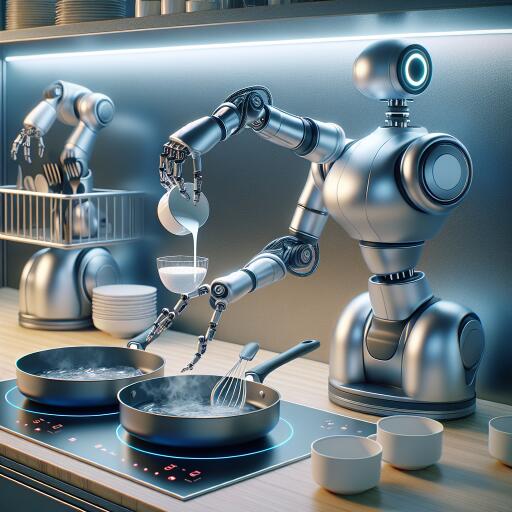Engineering Household Robots to Have a Little Common Sense
In the realm of domestic robotics, from cleaning spills to prepping meals, robots are being engineered to manage an array of complex household chores. A prevalent training technique for these robots involves imitation, where their programming directs them to replicate movements shown to them by humans. While robots have proven to be adept at mimicking these actions, their lack of adaptability to unexpected situations—unless specifically programmed for every conceivable scenario—remains a challenge.
Engineers at MIT, however, are breaking new ground by imbuing robots with a dash of common sense. This enables them to tackle tasks even when unforeseen obstacles arise. By integrating robots’ motion data with the expansive “common sense knowledge” found in large language models (LLMs), they’ve crafted a method that significantly improves robotic task management in the household.
This pioneering method allows a robot to dissect a given household task into smaller, manageable subtasks. More impressively, it furnishes the robot with the capability to adapt to disruptions within these subtasks. This means a robot can proceed with its task without reverting to the beginning or requiring exhaustive specific programming for rectification of every potential fault.
“Imitation learning serves as a cornerstone in training household robots. Yet, without the ability to correct minor errors, robots might find themselves derailed from completing a task,” explains Yanwei Wang, a graduate researcher at MIT’s Department of Electrical Engineering and Computer Science (EECS). Wang and his team have developed a way for robots to autonomously correct execution errors, thereby enhancing task success rates significantly.
Wang, in collaboration with other MIT researchers, will present this breakthrough in robotic learning at the upcoming International Conference on Learning Representations (ICLR). Their study emphasizes how this novel approach can streamline the performance of household tasks that previously required intricate planning and programming.
Consider a simple task like transferring marbles from one bowl to another—a task that traditionally would involve guiding a robot through each motion step by step. The MIT team, however, realized that breaking down a task into a chain of subtasks could offer a solution for a robot’s adaptability issue. By leveraging LLMs, robots can now understand the sequence of these subtasks in natural language, allowing them to anticipate and react to the task progression intelligently.
For example, when asked to list the actions involved in moving marbles from one bowl to another, an LLM could generate steps such as “reach,” “scoop,” “transport,” and “pour.” These steps, translated from natural language to robotic motion, constitute the foundation of MIT’s innovative training methodology.
The researchers’ algorithm connects these LLM-generated subtasks with a robot’s physical situation or an image depicting its status, allowing for automatic “grounding.” This process enables the robot to recognize its current subtask and make real-time adjustments—such as ensuring it has successfully scooped marbles before moving them—significantly improving its ability to perform tasks autonomously and adaptively.
The true potential of this approach was demonstrated through experiments with a robotic arm. After initial training, the robot was capable of adjusting its actions in response to being nudged off course or when other disruptions occurred, without requiring intervention to reset or provide additional guidance. This represents a major leap toward the realization of versatile and resilient household robots.
“What’s truly exciting about our method is its potential to streamline the training of household robots, making them capable of performing complex tasks despite disruptions, all without extensive additional programming or manual training,” states Wang. This advancement signifies a promising advancement in the field of domestic robotics, paving the way for more intuitive and dependable robot helpers in our homes.










